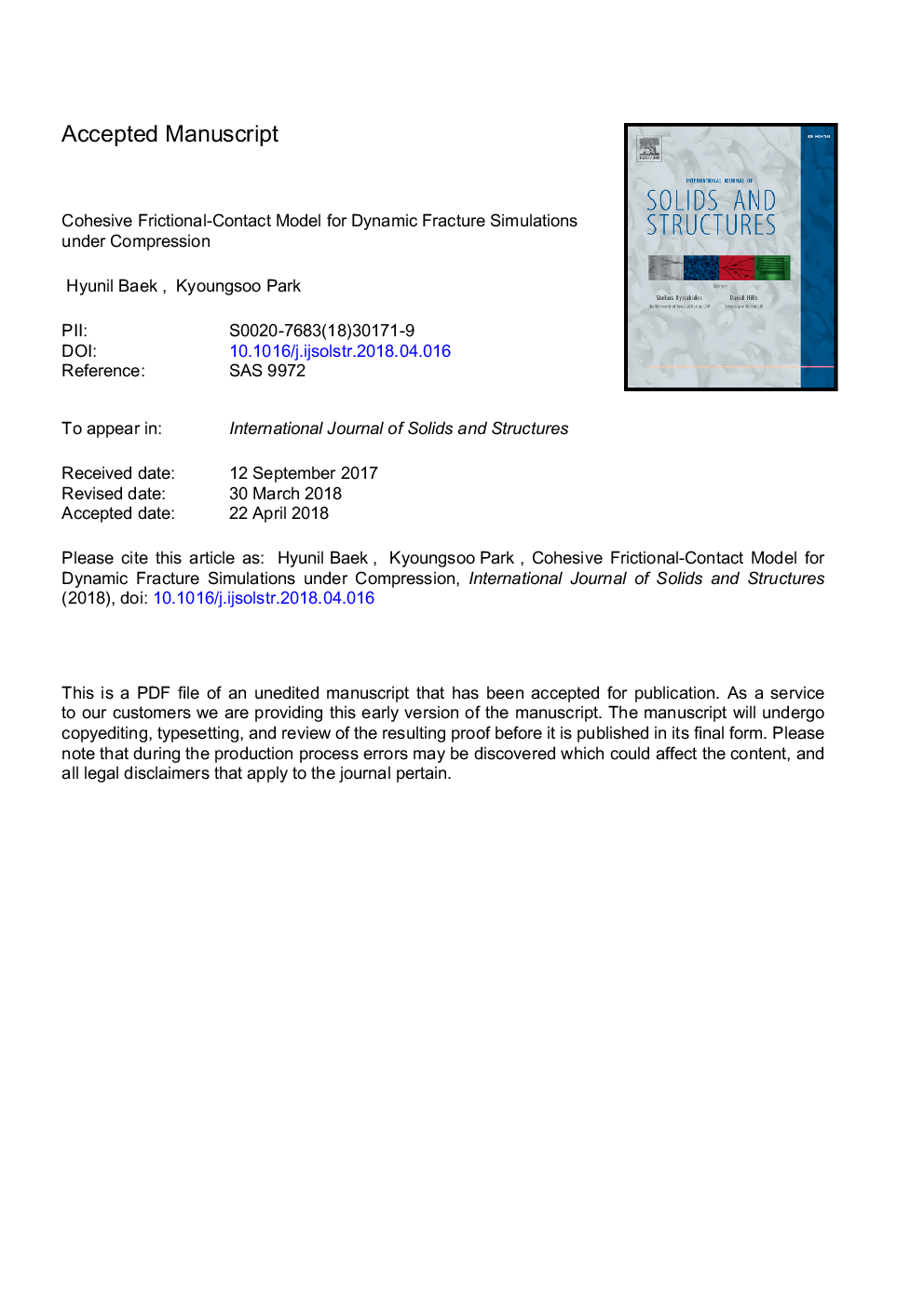| Article ID | Journal | Published Year | Pages | File Type |
|---|---|---|---|---|
| 6748266 | International Journal of Solids and Structures | 2018 | 46 Pages |
Abstract
In this study, a cohesive frictional-contact model is developed by integrating the cohesive zone model and the frictional-contact model to predict fracture behaviors under compression. In the cohesive zone model, a potential-based model, named as the PPR model, is employed to define the traction-separation relation. A frictional force is approximated using a Coulomb frictional model, which accounts for a stick/slip condition. A normal contact force is estimated by employing a penalty method. In order to evaluate stable normal contact forces, penalty parameters are defined by introducing non-dimensional contact parameters. This leads to less sensitive error of contact pressure with respect to the change in material properties and time increments. Furthermore, an example of an earthquake rupture and masonry shear tests under compression are simulated using the proposed framework. The computational results demonstrate that the cohesive frictional-contact model reproduces slip-weakening behaviors along a fault plane and captures experimental shear stress-slip relations according to the change in compressive stress on the fracture surface.
Related Topics
Physical Sciences and Engineering
Engineering
Civil and Structural Engineering
Authors
Hyunil Baek, Kyoungsoo Park,
